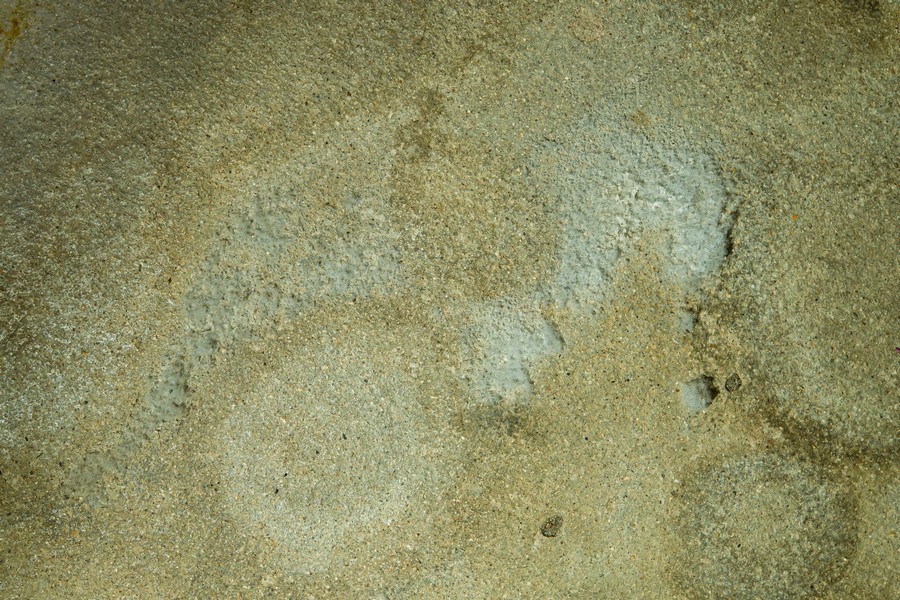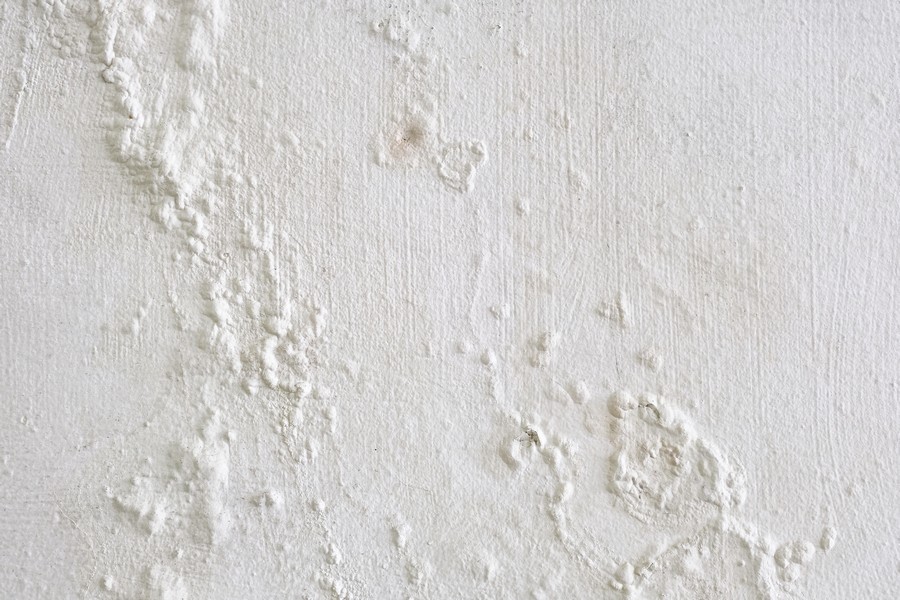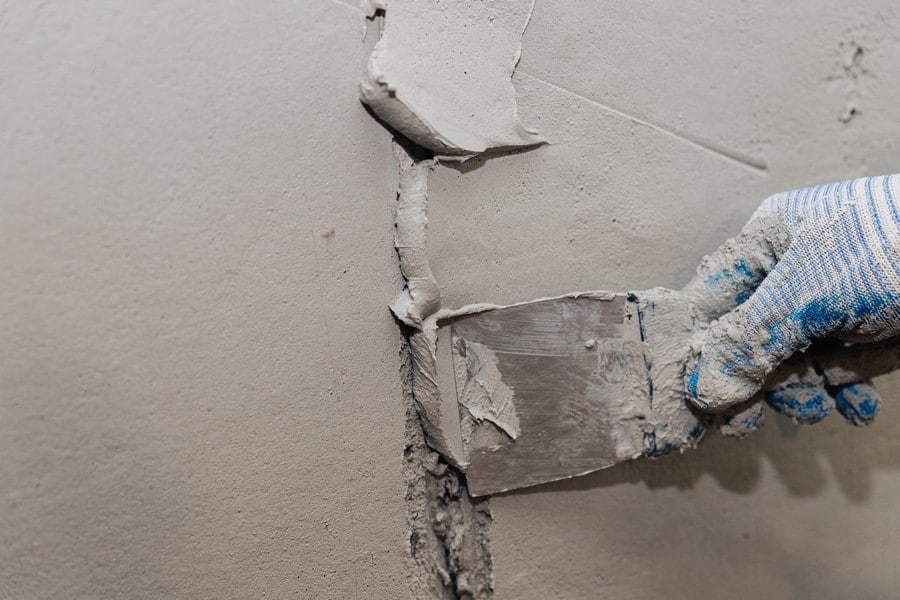Contact Sussex Damp Experts Now to Speak With an Expert.

Penetrating damp (also known as water ingress or lateral damp) is one of the most common types of damp in older buildings, but it can affect properties of any age.
Penetrating damp is caused by water infiltration through an external wall and into the home. This can occur due to a structural fault or because external brick or stone walls have degraded to the point that they have become porous, allowing water to enter the dwelling through the external wall. Mould can be propagated by penetrating dampness. Black mould is a prevalent hazard in areas where there is a lot of moisture.
The most common differentiator between rising and penetrative damp is the height at which it occurs. Rising damp will only occur up to a metre from the ground, whereas penetrating damp can occur anywhere.
Because the symptoms of penetrating damp are sometimes confused with those of other types of damp, identifying damp can be difficult if you don’t know what to look for. So what are the symptoms of penetrating damp? You should be able to recognise the indicators of penetrating damp from the following signs, regardless of size or scale:

Any watermarks on walls, windows, or ceilings indicate a penetrating moisture problem. When the surveyor inspects certain portions of the building, significant moisture readings are typically found.
If water is permitted to enter your property due to continuous periods of rainfall, damp patches will appear on the inside walls. Condensation may form in damp, chilly regions of the property as a result of this. If the damp problem has progressed to a critical level, water droplets may be seen. There will be no salts coming from the ground, unlike rising damp.
If your home is suffering from penetrating damp, the sooner you address the issue, the less damage it will cause. Contact our damp proofing team today by calling 01273 257 765 or filling out an online form to schedule a survey.
Penetrating damp symptoms aren’t just noticeable on the outside of the house. Damaged plasterwork, rotted wood, and mould development are all common indicators of penetrating dampness on the inside of walls.
The deterioration of paints and plaster, blistering, and the emergence of stains and salts on the surface of walls can all be caused by penetrating dampness.
Damp masonry can wreak havoc on wooden fixtures that are directly attached to it. Water can seep through bricks and saturate wooden structures, causing them to rust and disintegrate.
Mould development on walls is often linked to condensation, but it can also indicate penetrating wetness. The moist wall surface provides a favourable environment for mould growth.
Contact Sussex Damp Experts Now to Speak With an Expert.
Penetrating damp can impact both the inside and outdoor portions of a house; therefore, property owners should be aware of this. External penetrating damp has the following symptoms:
Damaged brickwork on the property’s external walls is the most prevalent symptom of penetrating damp. Frost damage is the most common cause of this. Moisture freezes and subsequently expand in frigid conditions. If moisture has made its way into the brickwork, the water will expand, causing fractures and spalling within the walls.
When there is a lot of moisture on the walls, moss and algae start to form. These organisms are attracted to damp environments and can swiftly spread if treatment is not administered promptly. This will cause the brickwork to erode over time and is unappealing to any homeowner.
Call Our Sussex Damp Experts team now for quote, consultation and advice:
Call on 01273 257 765.
Compared to properties built with cavity walls, those built with solid walls are more prone to suffer from penetrating damp. Having cavity wall construction protects against moisture penetration. This is because cavity walls provide an air gap between the internal and external walls, preventing moisture from rapidly entering the building’s interior walls.
Property owners should be aware that having cavity walls does not make you immune to penetrating damp problems. Cavity wall insulation can cause problems because the walls can get blocked, allowing water to enter the inner wall despite the presence of an air gap that generally prevents this.
Damp insulation allows moisture to seep into the building’s interior walls. If there is a problem with the cavity’s exterior wall, moisture will pass through to the inner wall. The cavity’s insulation could be harmed as a result.
We hope that this tutorial has given you a better understanding of identifying indicators of penetrating damp. If you notice signs of moisture penetration, it’s always a good idea to have a damp specialist inspect your home to ensure the problem is diagnosed correctly.
A survey undertaken by one of our experts will include a thorough examination of all areas of the property for symptoms of damp and other timber-related issues. A detailed report will be given to you once the survey has been finished. This will describe what was discovered during the property inspection, such as the source of the problem. It will also outline the procedures that must be taken to ensure that the penetrating damp issue does not recur in the future. You can reach out to our staff online or by calling 01273 257 765 to schedule a survey.

Sussex Damp Experts is the company to call if you need professional penetrating damp treatment. Our surveyors and other members of our team will accurately analyse, diagnose, and treat your penetrating damp problem using cutting-edge diagnostic technology and treatment procedures. With over 10 years of experience in treating properties from the effects of damp, rot and woodworm. Contact our team today on 01273 257 765 or click the button below to book a survey today.


Penetrating damp is a very dangerous problem. It, for example, creates ideal conditions for Serpula lacrymans to grow, in addition to the usually visible signs. This harmful fungus is known as dry rot, and it can ruin the timber framework of your home, posing a threat.
Moisture has been identified as one of the primary causes of respiratory health issues in the general population, with the elderly, asthmatics, and children being particularly vulnerable. Although dampness isn’t necessarily harmful, it might aggravate the symptoms of people who already have health problems.
There are a number of reasons why your home could be susceptible to penetrating damp. Leaking or pierced pipes, broken roofs, and clogged gutters are all common sources of damp difficulties. Because the preceding flaws allow moisture to penetrate through your property’s walls, they cause dampness to form.
As time passes, the degree of the damp damage and paint lifting on your interior walls becomes more apparent. During the winter months, these problems are exacerbated when water trapped in the walls freezes and expands, causing the raised paintwork to flake.
Rainfall can infiltrate buildings through leaky roofs, blocked gutters, overflows, and other water entry sites, generating penetrating wet. When water penetrates the building’s framework, it can cause significant structural damage to the walls and beams. Large stains on the ceiling, floors, walls and interior paintwork make this form of moisture easier to identify, especially after severe rains.
The parapets, roofs, and chimneys are usually the most vulnerable to the effects of severe rains since they are difficult to maintain due to their inaccessibility. Water can seep through broken water ridges, lead flashings, hips, or water fillets, making roof junctions the most troublesome areas. Penetrating damp is usually caused by structural difficulties such as faulty roofs, gutters, or wall cracks. Damp can cause damage to a building’s interior and exterior walls.
Identifying and correcting the cause of moisture/water ingress is the most critical stage in penetrating damp treatment. Property issues are more likely to blame for penetrating damp. Even in residential developments, there are, on average, four potential points of water entry that can impact a home:
To keep the brickwork from being saturated, all of these places must be kept in top shape, with any faults detected and problems corrected.

Giving a set price for dump treatment is impossible because the cost of a damp treatment is determined by several factors, such as the size of the house, the extent of the damage, and so on. After conducting a penetrating damp survey on your property, we will provide you with an estimate for penetrating damp treatment.
We adhere to high standards for damp proofing treatments, professional re-plastering, wood preservation, and damp inspections.
We provide homeowners, local governments, small enterprises, and large commercial properties with customised, professional, and dependable damp proofing treatment and repair services.
If you are experiencing damp issues in Brighton and the surrounding areas, please call our damp specialist team on 01273 257 765 to schedule a survey or treatment.
Following our instructions, one of our CSRT and CSSW trained surveyors will thoroughly examine and provide a report, price quote and treatment suggestions.
We have a team of damp proofing experts with a wide range of experience dealing with damp issues such as penetrating damp, dry rot and woodworm, wet rot, wood rot, basement waterproofing, all sorts of interior dampness, and condensation control in both commercial and residential premises.


Max and his team have been at our property all week and I really can’t thank them enough for the fantastic job they’ve done on plastering both our walls and ceilings. They have literally transformed the appearance of our house! Not only has Ma…

From start to finish Max has been incredable. His knowledge lin damp proofing is second to none and his team where very clean and polite. The plastered finish was like glass so happy we choose Max Plastering for job.

Lovely bunch of lads left a very neat and clean job. Problem was solved.

Perfect Finnish and all left clean and tidy and no mess. Used Max previously and would not hesitate to ask him carry out more work.

Max, Harvey and Stuart arrived promptly as arranged. Done a great job on our outside rear wall. Work completed to a high standard, removal of all old material and cleaned up after themselves. I am so pleased with the standard of their work they ar…

They turned up on time and carried out the works in a very professional manor leaving the front of the house clean and tidy. Very impressed would definitely recommend.

I have to say that on every level Max (with Stuart and Harvey) did an extremely professional job! They explained what they were going to do, they were polite and courteous and respected that they were coming into our home. The plastering is of the…

I called max and he managed to come around the same day to do a survey. The next day I received an extremely detailed survey compared to any other damp proofer which made me feel very at ease that he was going to do the right job. Max and team tur…

Contact Sussex Damp Experts Now to Speak With an Expert.